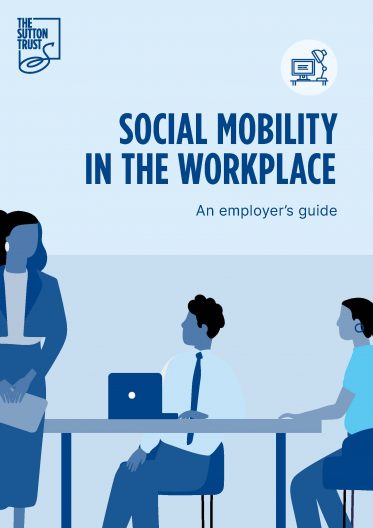Report Overview
Over the last few decades, there has been a welcome focus on improving diversity in the professional workforce, with many employers and industries working to remove barriers, including by gender, ethnicity and sexuality. In more recent years social mobility and socio-economic diversity in the workplace has begun to receive more attention.
This guide is aimed at employers looking for detailed advice to improve social mobility in the workplace, aimed both at those taking their first steps to improve socioeconomic diversity in their workforce, as well as giving practical tips and guidance for those who are already further into the process. The guide provides a companion to existing advice for businesses, including the Social Mobility Commission’s Employer Toolkit.
It covers a wide range of issues, from how to measure the socio-economic make-up of your workforce, through to contextual recruitment and best practice advice on routes into the workplace for young people, including internships and apprenticeships.
We have also published an impact brief looking specifically at the effects of the Covid-19 pandemic on graduate recruitment: Covid 19 Impacts: Access to the Workplace.
Note: Rare recruitment’s contextual admissions system has been updated since this guide was published. Alongside flags, candidates are given a Performance Index (PI), a measure of academic outperformance based on what a candidate achieved at KS5 level compared to their school average that year. They no longer use university results to contextualise performance. Paid for versions can both be integrated into existing recruitment systems or non-integrated.
